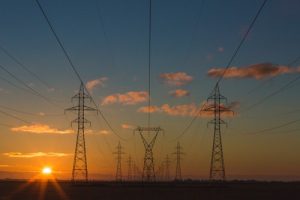 In the United States, public debates surrounding energy policy focus on generation, carbon emissions, and cost. But all is for naught if the energy infrastructure that carries power isn’t appropriate for the changing energy mix or can’t keep up because it’s crumbling. With new technologies rising faster than sea level on a hot planet, the United States is in the midst of the biggest energy boom in 60 years. We have more natural gas, coal, and uranium than we need for several hundred years; new and better solar cells; new biofuel technologies to replace ethanol; and even more oil than we thought we had. The source of energy isn’t the problem for our future. It’s how we capture it and move it around the country that is critical.
In the United States, public debates surrounding energy policy focus on generation, carbon emissions, and cost. But all is for naught if the energy infrastructure that carries power isn’t appropriate for the changing energy mix or can’t keep up because it’s crumbling. With new technologies rising faster than sea level on a hot planet, the United States is in the midst of the biggest energy boom in 60 years. We have more natural gas, coal, and uranium than we need for several hundred years; new and better solar cells; new biofuel technologies to replace ethanol; and even more oil than we thought we had. The source of energy isn’t the problem for our future. It’s how we capture it and move it around the country that is critical.
We are headed for a big disappointment if we don’t upgrade our energy infrastructure. The American Society of Civil Engineers recently gave America a D+ for our infrastructure overall. Energy alone got a D+. We have over 3,000 total power outages each year. We accept an outdated 1950s decaying electrical grid that leaks electricity to the ether and is falling apart faster than we are repairing it. Blackouts, brownouts, blown transformers, downed power lines, and other continuous grid problems alone cost Americans $150 billion each year, an amount that will keep growing. The big transformers weigh 400 tons, cost $7 million each, and take two years to replace. They are failing at 10 times the rate as in 1980.
Although many Americans say they want new renewables and natural gas, whenever new transmission lines or gas pipelines are proposed to reach those areas, they are voted down. The 115th Congress’s USA Infrastructure Act went nowhere, although Democrat control of the House could change the situation.
Opportunities to improve the functioning and reliability of the grid arise from technological developments in sensing, communications, control, and power electronics. These technologies can enhance efficiency and reliability, increase capacity utilization, enable more rapid response to remediate contingencies, and increase flexibility in controlling power flows on transmission lines. But it will take $2 trillion between now and 2040 to keep the lights on for the second half of this century.
Dr. Conca, I agree the United States needs to start planning as soon as possible for an evolution of its critical energy-related infrastructure. In 2009, I wrote a paper “Creating… Read more »
Good points!
A central question in assessing the energy infrastructure big picture is to evaluate how to more effectively use our energy resources. Transportation is an important part of that assessment, but… Read more »
Another good point! It certainly is better than petroleum. But still is a fossil fuel.
While NG-based fuels have lower levels of air pollution that diesel or gasoline, when it comes to climate change, they have little or no benefit. While CO2 emissions from the… Read more »
Indeed!
There are two energy infrastructure problems. The big infrastructure problem is replacing worn out infrastructure and the extremely big infrastructure problem is creating a low carbon future. Let me use… Read more »
I’m afraid you’re right. The last time I talked with the AGA, they are planning on the U.S. becoming 80% natural gas by about 2060. It doesn’t make any difference… Read more »
Utilities out west are being sent back to the drawing boards by their regulators when they present back up gas build requests. The regulators see lithium-ion batteries as competitive with… Read more »
There is no way batteries will be anywhere near competing with gas as peaking by 2022, or even 2030. We just don’t have the heavy metals needed, and the cost… Read more »
It would seem you are overly cautious about storage. In addition to Wood Mackenzie, Bloomberg New Energy Finance, in 2017, predicted the global energy storage market would double no fewer… Read more »
“The source of energy isn’t the problem for our future. It’s how we capture it and move it around the country that is critical.” Gotta disagree with your emphasis …… Read more »
That sounds great, but what is the rate at which these are going in? Degradation of the existing grid is going faster than installation of mini grads and smart technologies.… Read more »
Again, I would quarrel with that statement that regulated markets are better. First, exactly how do you define ‘better’? Are you taking about per capita energy use? Washington state uses… Read more »
Indeed, the history is key, especially the formation of BPA. Yes, cost and emissions are key. Yes, run by the government as a non-profit is best, it’s what the nuclear… Read more »
I agree in general that we need to modernize our grid, both transmission and distribution lines, and the sensors and controls. To create a more resilient grid, we need to… Read more »